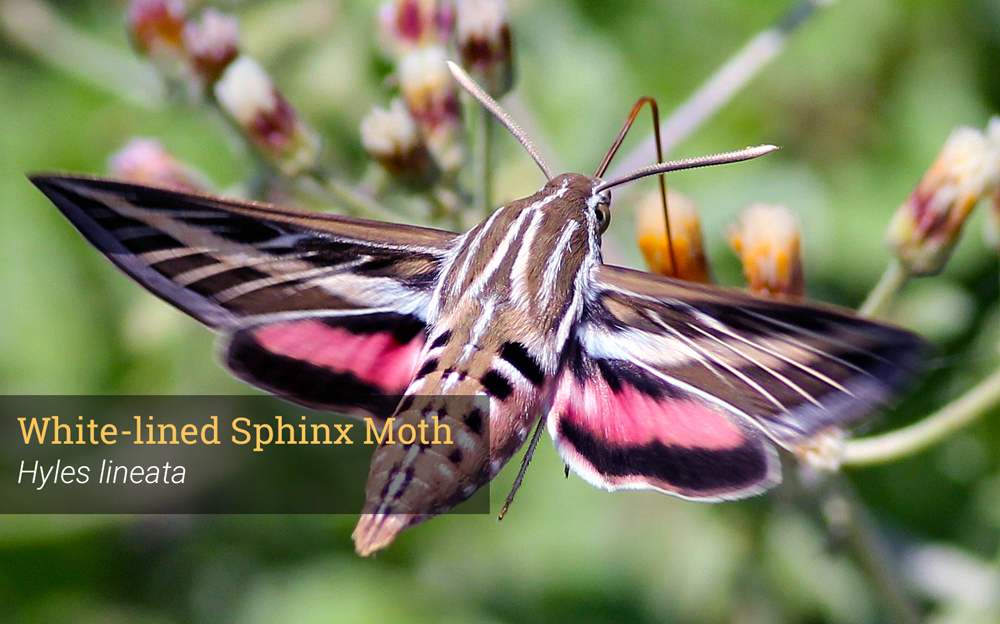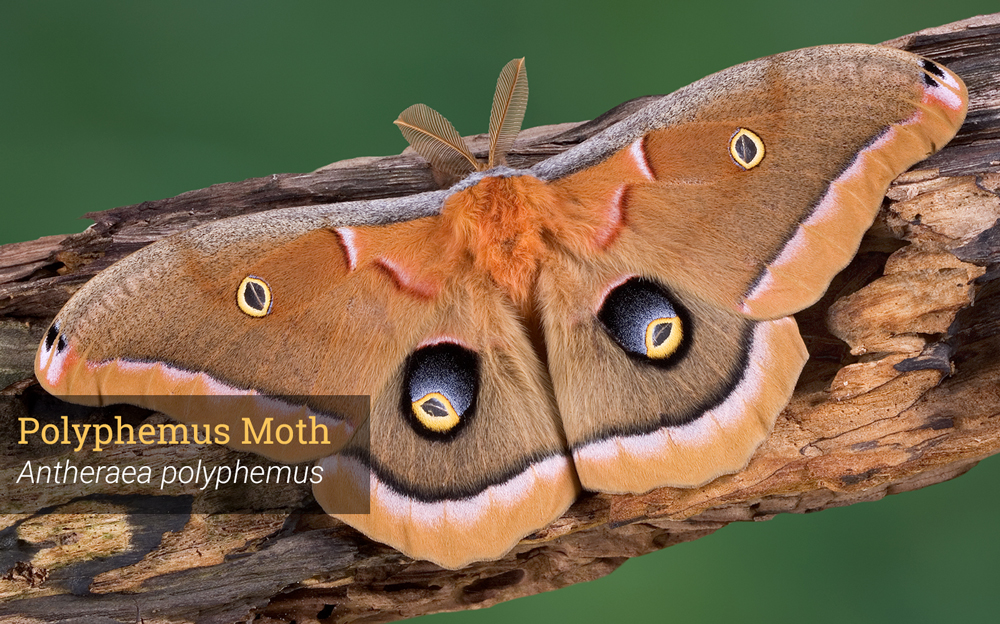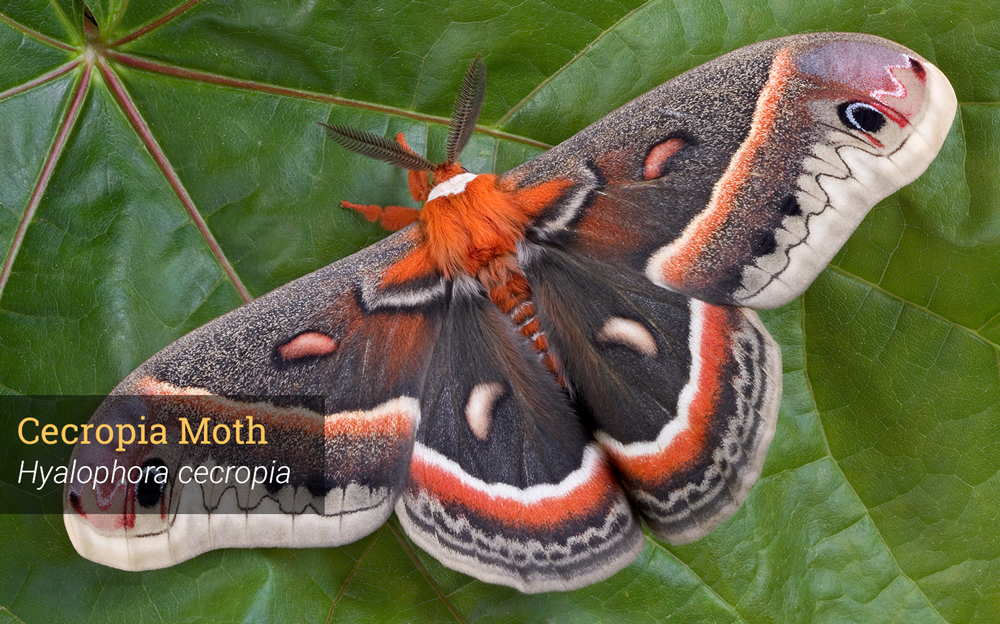Explore the dark world of covert pollinators, where moonlit moths eclipse butterflies to rule the night. Make a shadow-savvy garden to attract these nocturnal nectar sippers!
Catch a glimpse of a small shape darting in to sip on your flowers at dusk? You might be surprised to discover a hovering pollinator that’s not a hummingbird, but a moth. Take a closer look and you could find a white-lined sphinx moth — and a world where moths carry on the work of pollination cloaked in darkness.

Like many pollinators, moth populations are in decline due to habitat loss, development and other reasons. But your water-saving landscape can offer other benefits, including serving as nectar buffets for moths and host plants for their caterpillars.
Planting for Moths
-
- Many plants have adapted to attract moths. Tubular white or light-colored flowers stand out in an unlit landscape and fragrant flowers draw in these pollinators. While dining, moths pick up a lot of the pollen on their “furry” bodies and transport it to the next flower.
- Nighttime pollinators visit many of the same flowers as their daytime counterparts so check out our list of butterfly plants. In fact, more moth species are often pollinating the flowers than butterflies. Try planting cenizo, salvias, columbines, honeysuckle or larkspurs.
- Some moths also feed on tree sap or rotting fruit. Other species have vestigial mouthparts and do not feed as adults, such as a Polyphemus moth or cecropia moth. But they still need host plants for their young.


- Include host plants. Much like butterflies, moth species lay their eggs on certain types of plants. White-lined sphinx moths lay their eggs on four o’ clocks, purslane, evening primrose, grapes and elm trees, among others. The impressive black witch moth uses candlestick senna and acacias.
- Turn off your outdoor lights to avoid light pollution. It makes moths an easier target for predators. Plus, they won’t fly in your house when you open the door at night!
- Avoid pesticides.
Go Mothing!
National Moth Week is July 18-26 and going “mothing” in your yard is a natural physical distancing activity that’s easy to try. Start your adventures in mothing by trying the methods below.
Remember to share your observations. If you need help identifying a moth, narrow it down by looking at the moth’s shape (pdf) and try a website like iNaturalist.
- Turn on your porch light. Or throw a white sheet over a branch and put a light nearby, if you want to avoid accidentally inviting them in to your house. Remember to turn it off when you’re done!
- Sugaring. Moths have a sweet tooth, ahem, proboscis. Try mixing up some moth bait and painting it on trees, then returning after sunset with a flashlight to look for these insects. Mix together brown sugar, an overripe banana, beer and molasses or maple syrup until it’s a thick slurry or paste. Some recipes call for leaving it to sit several hours or a few days before painting it on the tree.
Not all moths fly at night, so be on the lookout during the day. Moths have feather-shaped antennae while butterflies have club-tipped antenna. Try your luck with spotting both daytime and nighttime fliers this week!


